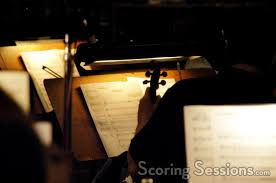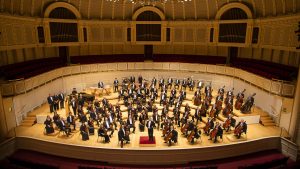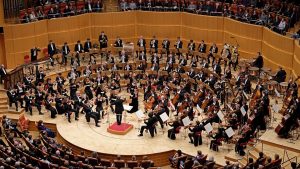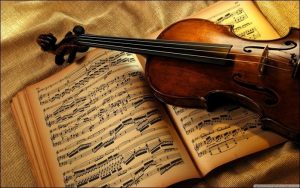Contemporary Music Composer
The music samples below are all performed by virtual instruments. Please feel free to just listen. Or, you may download the mp3s (audio files) and/or download the written scores (with individual parts) in pdf format. My six symphonies are at the bottom of the page. The music clips below aren’t shortened versions or watermarked; you can hear the whole piece. Musically, I think all of it is very accessible. It is all “light” music. Even the symphonies are on the “lighter” side. In other words, all of it is easily appreciated (or not). I am a contemporary music composer, but If you are looking for any avant-garde, “modern,” or bizarre music, you won’t find it here. Hopefully, though, you’ll enjoy what I’ve done so far! If you’d like to drop me a line and let me know what you think of any of it, I’d appreciate it: mhenebry@aol.com.
If you would like to hire me to write something for you, or to use the audio of the any of music on this web site for any reason (e.g., a YouTube video, a documentary, television, for advertising, a live event, a web site, a corporate CD/DVD, a feature film, an audio project, a school project, a video game, etc.), please contact me by email at: mhenebry@aol.com. Let me know what piece you would be interested in and a little about the project, and I will give you a very reasonable price.
Music:
Downloads: mp3s $.50 pdfs (includes score & parts) $10
Or just listen!
When you are ready, please go to “checkout.” Upon checkout, you can either pay with a credit card or use PayPal (or use PayPal to create a PayPal account or pay with a Credit card or a Debit card there). Either way, you will be provided a download link, on the spot, that never expires.
 Blue Ivory
Blue Ivory
A slow romantic piece. The instruments are Piano, Strings, French Horn, Acoustic Guitar. There is no real “story” to this piece. After writing it, I just called it “Blue Ivory” because it is a piano feature and it is in a minor key. It is very mellow and has a kind of Henry Mancini feel to it.
mp3
$0.50Add to cart
pdf$10.00Add to cart
 Flamenco Gitano
Flamenco Gitano
“Flamenco Gitano” is Spanish for “Gypsy Flamenco.” Before writing this, I studied Flamenco a little (I usually study the style when departing from familiar ground). I discovered that Flamenco is a very rich, and technically almost as deep of a style, as jazz. So, I wasn’t able to master it, of course. But, at least I got into it a little more than just superficially. The piece is mostly in a loose E Phrygian and/or Modern Phrygian, a typical Flamenco mode. It has frequent use of the Andalusian cadence (Am, G, F, E), which is also big in Flamenco. I even tried to simulate a little of the clichéd “Rosuerado strumming (the stereotypical fast up & down multi-fingered strumming).” But that is very hard to do with virtual instruments (even with humans!). It is in 4 parts. The first part is solo guitar, including some Rosuerado and golpe (the fingernail tapping and hand slapping on the guitar) and it is through-composed (not in repeating phrases). The second part is also through-composed, but in Am, and introduces the other instruments. The 3rd part is 8 bars of rhythm and guitar ending in a 2-bar break that leads into the last part which is in song form. The piece ends with a Cajón solo and a tag. The instrumentation is acoustic guitar, rhythm guitar, strings, horns, flutes, oboe, bassoon, horns, triangle, wind chimes, Cajón, Maracas, Castanets, clapping, Flamenco Dancer, tambourine, harp, and string bass.
mp3
$0.50Add to cart
pdf$10.00Add to cart
 Anastasia
Anastasia
About six months ago, my first grandchild was born. Her name is Anastasia. I had been wanting to write a lullaby for her. Her father, my oldest son, asked me (when he was about 3) to sing him a “loveabye.” Of course, he meant “lullaby.” I soon wrote a lullaby and called it “Loveabye”. Initially, my working title here was “Loveabye for Anastasia.” But although it started as a sort of lullaby, it drifted more towards a song. So, I called it “Anastasia.” This is her photo. Isn’t she a cutie!
mp3
$0.50Add to cart
pdf$10.00Add to cart
 A Beira de Baia
A Beira de Baia
Means something like “on the edge of the bay” or “near the water,” or something like that in Potuguese. It is pronounced “ah bay-ra zhay (not “de”) buy-ah.” It is a 5/4 Bossa Nova scored for Alto Flute, Bass Flute, Alto Sax, Drums, Latin Percussion, Acoustic Guitar, Rhythm Guitar, Piano, Vibes, Organ, Choir and Strings. In February of 1967 (I was 22), I met the members of the, then popular, Sergio Mendes group “Brasil 66.” Sergio was not with them. A few months earlier, I had written an instrumental piece I called “Samba de Cinco,” which was a 5/4 Bossa Nova. Anyway, the group gave me Sergio’s phone number. I called him and asked if he might be interested in the song. He asked if it had lyrics. I said “no.” He said that they only did vocals. So, over a period of about 6 months, in my spare time, I put Portuguese lyrics to it. It took that long because I was working a ton of hours, I lived in an apartment building in which the ratio of females to males was over 3 to 1, Sergio didn’t seem all interested in the song, and I didn’t speak Portuguese! I finally did write the lyrics though (this was well before “Google Translate”), but I abruptly went on the road as a truck driver, putting everything (including the song) into storage. Then, four years later, I found out that a friend of mine was Sergio Mendes’ bodyguard! I pulled the song out of mothballs (literally) and asked him to hand it to Sergio. Soon after that, I lost contact with this friend! So, to this day, I don’t know if Sergio ever even saw it. A few months ago, almost fifty years later, I finally orchestrated it. As I started arranging the piece, it started to remind me of a Henry Mancini kind of Pink Panther movie type of number… sophisticated, light-hearted, slightly jazzy, slightly comical, etc. So, I went in that direction with a little bit of tongue-in-cheek scoring in spots. I can imagine it in a Peter Sellers kind of movie. Sadly, they don’t make Peter Sellers movies anymore, Peter Sellers is not even alive anymore (neither is Henry Mancini), Bossa Nova’s are not popular anymore, Brasil ‘66 isn’t around anymore and 5/4 Bossa Nova’s never were popular (in fact, this one might even be the only one ever written)! So, my song has “hit” written all over it!
mp3
$0.50Add to cart
pdf$10.00Add to cart
 Aria
Aria
This is somewhere between an operatic Aria Cantabile and a ballad with no words. I would have liked to call it “Vocalise,” but, of course, Rachmaninoff already took that title. In fact, originally, the first three notes of my piece reminded me so much of “Vocalise” that I had to change them. I ended up calling the piece “Aria.” What else? It would take a good soprano, a strong coloratura, to be able to hit the high “D” at the end, but some are able to reach it. I could drop the last note down an octave (which was how I first wrote it anyway), but I like it a little better this way. I could also drop the key if necessary, but that changes the color slightly and I like it in this key (Dm) the best. Besides, Beethoven and Wagner (and others) have written sopranos up to around “F” and above. Of course they were Beethoven and Wagner… I would probably have to startle the singer in some peculiar way in order to achieve those kinds of results!
mp3
$0.50Add to cart
pdf$10.00Add to cart
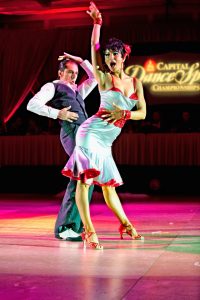 Mambo No. 1
Mambo No. 1
This is, obviously, a Mambo. After many hours of grueling deliberation, I went with the highly creative and obscure choice and called it “Mambo No. 1.” It is arranged for Big Band. I edited out a few grunts from some Perez Prado recordings and spliced them in for a little flare.
mp3
$0.50Add to cart
pdf$10.00Add to cart
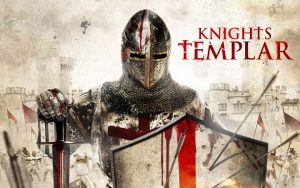 Knights Templar
Knights Templar
I had just started to study Bruckner’s 6th Symphony and only about 25 bars into the first movement, I was so impressed by the orchestration that soon afterwards, I started to write this piece (orchestrated a similar style). His movement and my piece are both in the Phrygian mode (A-Phrygian), his with a major tonic though. His was a brief statement of a motif, whereas my whole piece is built around my motif and over a pedal that is nearly uninterrupted for the entire piece. As it turned out, because of the mode and the energy, the piece has the feel of battle in the Middle Ages. I call it “The Knights Templar.” The Knights Templar, were the Special Forces, ninja and Samurai of the Crusades. If you haven’t read about them, it is highly recommended. Theirs is a fascinating and incredible story, involving holy grails, fortunes, secrets, power, occult, and many conspiracy theories that tie them to modern world powers (Freemasons, etc.). They were either Christian or anti-Christian, depending on who you believe and when. At one time, the church (which ruled supreme in the 1100s), granted them almost total power, second only to the Pope. But later, during the Inquisition, they were executed by the church for heresy. Either way, there was a religious connection, so I threw in some chimes to cover that aspect. The piece is built mostly on power chords, pedals and octaves. It is supposed to be pretty loud, so wait until you need to disturb someone.
mp3
$0.50Add to cart
pdf$10.00Add to cart
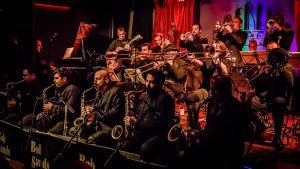 Swingin’ Low
Swingin’ Low
This is a Big Band Swing piece.
mp3
$0.50Add to cart
pdf$10.00Add to cart
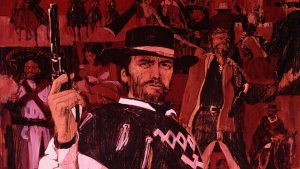 The Spaghetti Western
The Spaghetti Western
I have been asked to compose the score for a new (B-movie) Spaghetti Western. I will receive the handsome sum of zero, but the film will be pushed at film festivals… so I will probably get discovered! Even the actors and director are working for free, but they are all very competent and experienced people.
The music style of the 1960s Spaghetti Western was pioneered by Ennio Morricone. So, I bought and read a few books by and about him and his music. I also critically listened to about 20 of his scores. I tried to copy his style (of course, not the music). The movie will also try to emulate the Spaghetti Western style.
Sergio Leone was the director of most of the famous Spaghetti Westerns. Normally, the music to a film is written after the film is made. But, contrary to standard practice, Morricone usually wrote the credits music (the main theme) first. So, that is what I have done here. Obviously, I’ll do the cues after it is filmed.
I used the typical Morricone way of building up intensity and volume and his typical instrumentation… acoustic and electric guitars, soprano recorder, ocarinas, chanting, operatic sopranos, bells, Mariachi trumpets, jaw harp, etc. to help give it that Spaghetti Western sound. I also wrote it in D Dorian, a mode that Morricone used regularly. He also frequently left out the 6th degree (B or Bb), so I did the same thing here… If this sounds like one of his scores, then I have succeeded.
mp3
$0.50Add to cart
pdf$10.00Add to cart
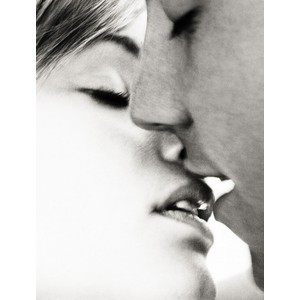 Passionata
Passionata
This is a romantic piece that features a full orchestra, piano, acoustic guitar and choir. It moves back and forth between 3/4 and 4/4.
mp3
$0.50Add to cart
pdf$10.00Add to cart
 The Old West
The Old West
This piece is suitable as a theme or background music for an Old West, Western, Wild West or Frontier type film. It features the French Horn and includes the cracking of a whip, wood blocks and other classic Old West sounds. The instrumentation is concert band.
mp3
$0.50Add to cart
pdf$10.00Add to cart
 Bedouin Caravan
Bedouin Caravan
I sat down to start working on my 3rd Symphony. After just 4 bars, I was writing some kind of Middle Eastern thing (I think I must have some Arab in me). So, I went with it and switched over to an Arabic scale and continued in the Middle Eastern vein. The original key was Bm. I just superimposed the Arabic scale over that and kept most of the dissonances. It’s a polytonal idea, but it doesn’t sound wild at all. There are three Middle Eastern percussion instruments in it (Dumbek, Zills, and Tar), but the rest of the instruments are all from the conventional Western symphony orchestra (well, except for the Taiko drums). The Bedouin were nomadic tribes that roamed all over all of the Arab countries. This piece brings to my mind scenes of one of their camel caravans.
mp3
$0.50Add to cart
pdf$10.00Add to cart
 Candlelight and Moonbeams
Candlelight and Moonbeams
This is a mellow piece featuring piano, acoustic guitar and orchestra.
mp3
$10.00Add to cart
pdf$0.50Add to cart
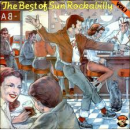 Rockabilly Rock
Rockabilly Rock
I had a shot at contributing some music to and/or scoring a documentary film about Rockabilly, so I wrote this Rockabilly number just in case. This, like all of my other chances at stardom, fell through. It is just basic Rockabilly stuff: small rock combo, Boogie Woogie, Country, Blues, etc. I was thinking Jerry Lee Lewis on the piano (of course) and Chuck Berry on Guitar. I tried to simulate the famous Sun Studios-type echo, used Telecaster Guitars and kept it in mono to make it sound more authentic to the period. I also used a tube simulation and tape saturation plug-ins to give it an old analog tube sound. By the way, I actually “remember” Rockabilly! I was about 12-14 when it all happened (early 50s), Buddy Holly, Elvis, Carl Perkins, Bill Haley, all of them. I remember the attitudes of the kids vs. the older generations (I was one of the kids then) about the music, the cars (raked, lowered, souped-up), the malt shops, the hops, the poodle skirts, the haircuts, taps on the shoes, the fingertip jackets (I even dressed just like Fonzie, hair and all, in those days!). At first, the kids used the older jitterbug dance forms until they developed one just for rock. Originally, it was called the “Bop.” It was really the beginning of the teen economic phenomenon that is still raging today. It was also a huge racial breakthrough (Chuck Berry, Little Richard, and others). Before then there were “race” records. I remember when we first heard Elvis. We all thought he was black! The whole rock phenomenon (which started with Rockabilly) was a very big deal.
mp3
$0.50Add to cart
pdf$10.00Add to cart
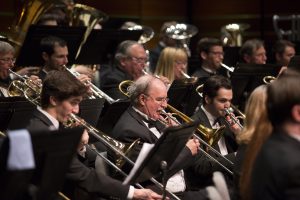 January, February March (the First Quarter)
January, February March (the First Quarter)
I had written a March with this title back in the 80s. I liked the title, but not the March. I was talking to a conductor , recently, and mentioned it. He got a kick out of the title, so I decided to write a better March to fit it. I just finished the new one (this one). It is a concert March (not likely to work for a parades).
mp3
$0.50Add to cart
pdf$10.00Add to cart
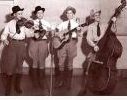 Shenandoah Fiddle
Shenandoah Fiddle
This is a virtuoso Bluegrass piece featuring the violin. The instrumentation is violin, banjo, acoustic guitar, and acoustic bass. It is in ABABA form. An argument could be made that it is in ABCABCA form because, in the first case, the second B section is almost a variation of the first time around (almost identical chord structure, and similar but different melodies). The chords are almost all primary (tonic, dominant, subdominant), but it also has an extra “Bluegrass” chord, a major supertonic (not a Neapolitan 6, but a raised 3rd). I sent a copy of it to 4 violinists that I know. They all like it, and it seems to be mostly playable (especially at a little slower tempo!), but it will take a virtuoso Bluegrass performer to do it up to tempo.
mp3
$0.50Add to cart
pdf$10.00Add to cart
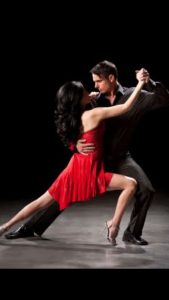 Tango de Amor
Tango de Amor
This is a tango. The instrumentation is horns, brass, Latin percussion, bandoneon, 2 acoustic guitars, piano and strings.
mp3
$0.50Add to cart
pdf$10.00Add to cart
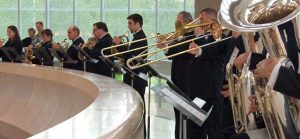 Fanfare for Hercules
Fanfare for Hercules
This is a fanfare that I wrote for a local Fanfare Competition. The Dallas Winds do about 7 fanfares a year at the Dallas Symphony Orchestra concerts prior to the concert. I wrote this fanfare specifically for them. It is for 6 Trumpets, 5 Horns, 3 Trombones, 2 Euphoniums, 2 Tubas, and Percussion. They want the fanfares to be approximately 3 minutes long, this one is 3:05. I have written a concert band version of it too. The piece seemed to me, to call for “Hercules” in the title. I rejected “Hercules, Boy Wonder,” “Let’s Hear it For Hercules,” and “Hercules, Schmercules.”
mp3
$0.50Add to cart
pdf$10.00Add to cart
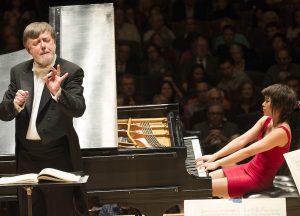 Cathy’s Song
Cathy’s Song
I wrote this song in 1971 (I was 27). It was about a year before I got married and for a girl I had dated for 7 years (and who I almost married). I just arranged and orchestrated it a few years ago. The piano part is exactly as I wrote it 49 years ago. I just added the orchestra.
mp3
$0.50Add to cart
pdf$10.00Add to cart
 The Gunfighter
The Gunfighter
This piece is suitable as a theme or background music for an Old West, Western, Wild West or Frontier type film. This started out as a 20-second “opening theme” for an Internet Western series that didn’t materialize. I expanded it into a 3-minute piece. It is scored for a pretty large group: Symphony Orchestra plus Concert Band, plus Taiko Drums, 2 Acoustic Guitars, Banjo, Harmonica, Male Choir and Electric Guitar. The kitchen sink was in the shop! This instrumentation assures that the piece will never be performed!
mp3
$0.50Add to cart
pdf$10.00Add to cart
 Ridin’ Home
Ridin’ Home
Another western. I called this one “Ridin’ Home.”
mp3
$0.50Add to cart
pdf$10.00Add to cart
 High Sierra Trails
High Sierra Trails
A couple of months ago, I sketched out a few western songs. This is called “High Sierra Trails.”
mp3
$0.50Add to cart
pdf$10.00Add to cart
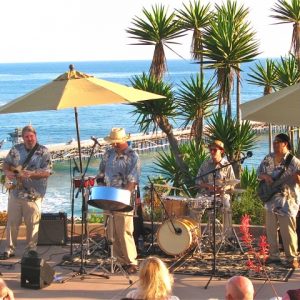 Calypso Beach
Calypso Beach
This is a Calypso written for 2 Steel drums, bass guitar and drums. I called it “Calypso Beach” because the title seemed to fit the music. It turns out that there actually is a “Calypso Beach” in Florida.
mp3
$0.50Add to cart
pdf$10.00Add to cart
 Star Eyes
Star Eyes
A mellow, romantic piece. The 2-note motif that permeates the piece seemed to call for a 2-syllable title. Since it made me think of a romantic evening under the stars with a beautiful woman (with the stars reflecting in her eyes), the title seemed to fit. It is scored for 2 Alto Flutes, Bass Flute, English Horn, French Horn, choir, Piano, acoustic guitar, bass, drums, solo violin and strings.
mp3
$0.50Add to cart
pdf$10.00Add to cart
 Fanfare for the Irish Kings
Fanfare for the Irish Kings
As I was writing this fanfare, it took on a sort of Irish feel. After all, I am of Irish descent (“Henebry” is an Irish name). The piece has a regal sound to it, not only in the fanfare, but in the countermelody. So, I called it “Fanfare for the Irish Kings.”
mp3
$0.50Add to cart
pdf$10.00Add to cart
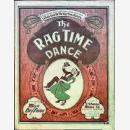 Oily Rag (piano)
Oily Rag (piano)
I studied a little Joplin and Lamb to get the form and style down and then wrote this rag (originally for solo piano). Then, I orchestrated it many years later for concert band. This is the piano version.
mp3
$0.50Add to cart
pdf$10.00Add to cart
 Oily Rag (concert band)
Oily Rag (concert band)
This version is scored for concert band.
mp3
$0.50Add to cart
pdf$10.00Add to cart
 Western Rhapsody
Western Rhapsody
One of my favorite pieces of musical advice came from the legendary music teacher, Nadia Boulanger. She, basically, said to stay true to your own style. In that vein, since I have written a lot of western (cowboy) kinds of things and seem to have an affinity for it, I had planned to make my 4th symphony a Western-themed piece. I don’t know where that comes from (born in Jersey City, spent most of my life in California, and have logged less than 5 lifetime miles on horseback). Maybe it was the popularity of westerns in my youth (yes, talkies). As I started to think of what I wanted to say, I soon I realized that my western side was a little too shallow for a full symphony and I didn’t want to deviate too much from the standard western fare to make it symphonic enough. So, I wrote this piece instead. It is made up of about 6 western moods. This could be called a suite or a concert overture, but I called it “Western Rhapsody.
mp3
$0.50Add to cart
pdf$10.00Add to cart
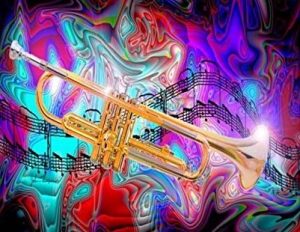 Mondo Funkadelic
Mondo Funkadelic
This is called “Mondo Funkadelic.” If you are in your seventies, or older, you will know what that means. But, if you are under about 60, you might not. Loosely translated from 1960’s-70’s slang, it means “very cool.” I, basically, started out with the idea of writing something along the lines of jazz/rock groups like Blood, Sweat & Tears, Chicago and Chase. So, it is a hybrid jazz/rock kind of piece. It is for 2 trumpets, tenor sax, trombone, guitar, piano, bass and drums.
mp3
$0.50Add to cart
pdf$10.00Add to cart
 Rockwall March
Rockwall March
This is a Circus March, or a Screamer. It conforms to the basic March form… 2 strains plus Trio with Breakup Strain, subdominant modulation, etc. It even has a piccolo solo in the third trio. I wrote it for a Community Band that I am in. Since Rockwall is in Texas, there is a slight western feel to the trio.
mp3
$0.50Add to cart
pdf$10.00Add to cart
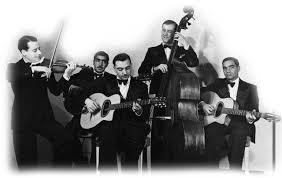 Djangoesque
Djangoesque
This is scored for violin, lead guitar, rhythm guitar and bass (all acoustic). When I first started writing it, it started to have a bit of a feel to it like the Django Reinhardt/ Stéphane Grappelli group “The Quintet of the Hot Club of France (QHCF).” So, I went with the direction it was taking me. The QHCF had two rhythm guitars, but I kept this as a quartet. It is not quite the QHCF style, but I did use them as a guide to some extent in the early going (and used “Django” in the title). “Django” (as in Django Reinhardt) is pronounced “jango.” He was a gypsy. Every once in a while the bass seems to take off like a 50s rock/boogie woogie slap bass. I like it, but I had very little control over it. Sometimes, these samples just seem to want to get down and wail on their own!
mp3
$0.50Add to cart
pdf$10.00Add to cart
 Where the Buffalo Roamed
Where the Buffalo Roamed
This is a concert march for orchestra. It is in a standard march form (complete with subdominant trio, breakup strains, etc.) except that it is in 4/4 and there is a flute obbligato instead of the more traditional piccolo solo. Other than those wild departures, it is fairly typical.
mp3
$0.50Add to cart
pdf$10.00Add to cart
 Concertino For Piano and Orchestra
Concertino For Piano and Orchestra
When I first started writing this, I wasn’t very happy with it; it seemed too mellow and a lot like several other things that I had written. I thought I was in a Mancini kind of rut (which isn’t a bad rut to be in, but a rut nevertheless). Usually, that unsatisfied period only lasts for a few hours, but a couple of days into it, I was still unhappy with it. I actually thought about the few people who ever hear my music and wondered if the finished product would be worthy of listening to. As I massaged it, tweaked it and molded it (are they all the same thing?), it started to develop into something that I liked. It gradually took on the feel of a piano concerto, so I went in that direction. Then, at a certain point, I had to make the decision whether to actually do a full blown concerto. A concerto is almost as much work as a symphony. So, I opted out of the concerto idea (although that is still a remote future possibility) and made it sort of a “Concertino.” It starts out fairly tame, but builds all the way along and develops into a pretty powerful piece (so, listen to all of it if you can). There are hints of Puccini, Rachmaninoff, Brahms, and even Gershwin in it, and I think the time studying these composers helped. The full title “Concertino for Piano and Orchestra” is either the result of many grueling hours of deliberation, or a quick way of getting out of the titling process; you can decide!
mp3
$0.50Add to cart
pdf$10.00Add to cart
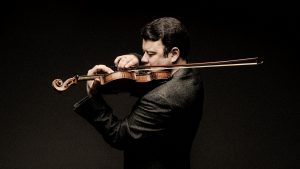 Ma Dernière Chanson
Ma Dernière Chanson
The title “Ma Dernière Chanson” is French and means “My Latest Song.” It is a solo violin feature. It starts with a string quartet and harp for 8 bars. The strings double in size for the next 8 bars. Then, all of the strings come in. Then, after the orchestra plays, the process is reversed, ending with the string quartet. The only brass in it is one horn solo. It is a very mellow. The reason for the title is that I had originally started writing a French Café kind of piece (Musette Accordion, etc.), but it never really jelled. Every composer has little bits and pieces that he keeps because he likes some aspect of them. This was one of those. I started on it over a year ago and would go back to it occasionally. Finally, it started to come together.
mp3
$0.50Add to cart
pdf$10.00Add to cart
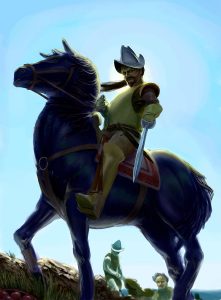 Conquistador
Conquistador
This is a Spanish flavored Conquistadorish piece.
mp3
$0.01Add to cart
pdf$10.00Add to cart
 Melody in Dm
Melody in Dm
This is a solo violin feature. It is a romantic orchestral piece that features violin, orchestra, choir and some synths.
mp3
$0.50Add to cart
pdf$10.00Add to cart
 Hail, Apollo!
Hail, Apollo!
This is another fanfare I wrote for a brass band for a fanfare contest. It is a nonstop fanfare (beginning to end).
mp3
$0.50Add to cart
pdf$10.00Add to cart
 Lass From The Emerald Isle
Lass From The Emerald Isle
This piece features Uilleann bagpipes and a Low Irish Whistle. The “Henebry” name is Irish. In fact, Rev. Dr. Richard Henebry, a distant cousin, was a famous Irish priest and musicologist. I was imagining my ancestors when I was writing this. I kept thinking about a young woman, probably from Waterford or Wexford (where the Henebrys were mainly from). That’s where the idea for the title came from. The Uilleann pipes have drones in octaves of “D,” so the key choices are pretty limited; this piece is in the key of “D.” I treated the drones like a pedal point; I guess that’s about the only thing you can do!
mp3
$0.50Add to cart
pdf$10.00Add to cart
 Mandolino Italiano
Mandolino Italiano
This piece is suitable for an Italian, European or Mediterranean theme or background. It features Mandolin, Marimba, accordion, choir, and full orchestra. I wrote it for a composition contest only to find out later that the “contest” was really to see how many people you could get to their web site to buy their products. The music itself was unimportant.
mp3
$0.50Add to cart
pdf$10.00Add to cart
 Blue Adagietto
Blue Adagietto
A slow “cool jazz” combo piece reminiscent of Miles Davis. The instrumentation is: Trumpet (Harmon muted), Piano, bass and drums. I had just finished writing the first movement to my 3rd symphony. Then, I started to work on the 2nd movement (an Adagietto) and ended up writing this jazz combo piece. I had written a few themes for horn, but they felt a little on the jazzy side. So, I tried them with a flugelhorn sample and, with a little tweaking, bending and adding some jazzier chords, I combined them into a short jazz combo ballad. Then, I tried it on muted trumpet and decided to make it a trumpet feature (ala Miles Davis). I added a piano solo and a trumpet solo and voilà, a new piece! It has a couple of low pedal tones that are probably very difficult to play, especially muted (but the samples never complain). If they are too difficult, the piece could be played on flugelhorn. Otherwise, I think it is very playable. There are a couple of high notes in the solo that can easily be improvised around.
mp3
$0.50Add to cart
pdf$10.00Add to cart
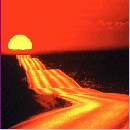 Badwater Nights
Badwater Nights
This piece is suitable as a theme or background music for an Old West, Western, desert, Wild West or Frontier type film. It could also be used for flamenco, Mediterranean, Spanish, or Mexican moods. It has a calm, floating quality to it. It features strings, castanets, acoustic guitar, French Horn and trumpet. I wrote about half of this piece over 30 years ago and added the rest of it just a few years ago. Interestingly (at least to me), the two parts are not sequential, they are superimposed one over the other and/or intermingled with each other. It is, in a sense, two themes going at the same time (in a way, like a call and response) giving it an odd floating, ungrounded kind of feel. Badwater is in Death Valley. I call the piece “Badwater Nights” because it reminds me of running during the summer nights in Death Valley. There are no city lights (no city!) and crystal clear skies, the stars are phenomenal there! I ran a 135-mile footrace in Death Valley in July of 2002 (starting in Badwater). It got up to 126-degrees during the day, but the nights were a balmy 100-degrees or so! During an event like that, after 40-50 miles, you get into a zone, a peaceful out-of-body floating feeling that this piece reminds me of (without the pain, of course!).
mp3
$0.50Add to cart
pdf$10.00Add to cart
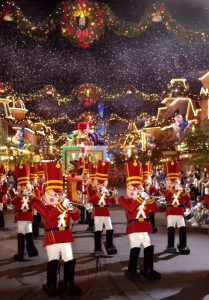 Snowflakes on the Toy Soldiers
Snowflakes on the Toy Soldiers
This started as a kind of impressionistic idea. At first, I was trying to depict confetti falling. Later, the idea of snow took its place. The Toy Soldier idea just popped up in the music as I was writing it. The first three phrases (the second is a variation of the first) are atonal and impressionistic (depicting snowfall), but have a slight touch of functional harmony. The Toy Soldier (Wooden Soldier) theme is tonal and features muted brass. Each repetition of a theme is treated differently and adds a new countermelody. I forced some tonality on the themes in those later variations in order to make the countermelodies work. By throwing in sleigh bells, I have guaranteed that this will be a perennial Christmas classic.
mp3
$0.50Add to cart
pdf$10.00Add to cart
 Lucia’s Theme
Lucia’s Theme
This is a mellow piece in a Mancini style. It is a simple AABA song form. The instrumentation is Piano, vibes, harp, strings, Italian Musette Accordion, backup singers and Cuban Salsa Percussion (maracas, claves, bongos, congas, etc.) with a Bolero rhythm. It is in the Phrygian mode (don’t ask me why; it just happened).
mp3
$0.50Add to cart
pdf$10.00Add to cart
 Call of the Wild West
Call of the Wild West
A western-flavored piece scored for concert band.
mp3
$0.50Add to cart
pdf$10.00Add to cart
 Canción del Torero
Canción del Torero
A Mexican Mariachi-flavored piece. Scored for orchestra and solo trumpet.
mp3pdf
$10.00Add to cart
 Crazy Charleston
Crazy Charleston
This is a piece written in the style of a 1920s “hot dance” number. It features a Charleston rhythm and the instrumentation is authentic for the big bands of the Roaring Twenties. It could be used for any kind of a 1920s sound. Had it been written then, it could very well have been performed at the Cotton Club (or any other Speakeasy) by the early (1927-1930) Duke Ellington Orchestra or bands like the Missourians or the Fletcher Henderson Orchestra. In case the Charleston makes a comeback, I am ready!
mp3
$0.50Add to cart
pdf$10.00Add to cart
 Baroque Dream
Baroque Dream
This is a string quartet with harpsichord. It is written in a Baroque style. It would be suitable for a 17th or 18th century atmosphere or as ambient music in an elegant setting. When I woke up one day, I immediately wrote down what I recalled from a dream. The music was kind of like the score from the last part of the dream that I was having just before I woke up. In the dream, I was on a boardwalk in Florida (seemed like Ft. Lauderdale or Miami) and I walked in to a very elegant hotel (gold banisters, glass chandeliers, candelabras, etc.). I assumed (in the dream) that the music was coming from a live string quartet in the lobby, although I didn’t actually see it. Then, before any plot could develop, I was awakened by one of my dogs barking. The music was still fresh in my mind, so I wrote down what I recalled. Not that it was so spectacular, but just because I kind of liked it and I could still hear it. Then, later that day, I filled in the rest of the first 8 bars. The bridge (the 2nd 8 bars of the harpsichord) came to me just after I turned the lights out to go to bed that same night. So, I turned the lights back on and wrote it down (again, the best I could… unfortunately, there’s not a Mozartian bone in my body). Then, probably because of the harpsichord, it took on a Baroque feel (which I then went with). I developed it into a short little piece. So, what I ended up with was my first Baroque style piece. I don’t generally even like Baroque music that much! I know that there is not a huge market for original Baroque/harpsichord music these days, but if anybody needs a new Baroque song, I’ve got one ready!
mp3
$0.50Add to cart
pdf$10.00Add to cart
 Creole Hot Sauce
Creole Hot Sauce
This is a Zydeco piece. Zydeco comes from a type of music called “La-La” which is a Creole/Cajun music from Southwest Louisiana. In the 50’s they mixed “La La” with rock and the result was Zydeco. I’ve always liked the style, I think almost everybody does. It is my first attempt at writing in this style. The instrumentation is accordion, violin, acoustic guitar, acoustic bass, washboard and drums. The washboard, or rottoir (from Cajun French), is a Zydeco staple. They also call it a “rubboard.”
mp3
$0.50Add to cart
pdf$10.00Add to cart
 Forarika
Forarika
The title is “Forarika (pronounced “For Erica”).” I wrote it in about 1971. It had no title for almost a year. Then, just after getting married to Arika in 1972, I gave it the title (scoring a few points in the process)! It’s not a romantic piece, but I didn’t tell her that (she still doesn’t read music)! A few years ago, in my unpacking, I ran across the manuscript of an orchestration that I had written for the Downey (California) Symphony Orchestra (who ran through it a few times at a rehearsal once in the mid ‘70s). About 4 years ago, after rediscovering the manuscript, I put it in Finale and mixed it a little in Cubase. About 4 or 5 years after writing the piece (or in about 1976 or 1977), I was walking alone in the Cerritos (California) Mall and heard, what sounded like “Forarika” being played over the music system. I spun around a couple of times looking up in the air (like I was looking for the music). I must have looked like Steve Martin in “All of Me!” My first thought was that someone had stolen my song! It was the first time I had heard the 70s pop hit “Nadia’s Theme.” Then, after a couple of bars, it deviated from “Forarika.”. But, still, if I ever find out that the composer was in the Downey Symphony Orchestra..! If you are interested, Google “Nadia’s Theme” and listen to the beginning of the theme (just after the intro) and you’ll see what I mean.
mp3
$0.50Add to cart
pdf$10.00Add to cart
 Grand Vienna
Grand Vienna
Written in the form of a 19th century Viennese Waltz in the style of Johann Strauss, Jr. with the instrumentation of his orchestra. I studied the form of several Strauss Waltzes and this is what I came up with.
mp3
$0.50Add to cart
pdf$10.00Add to cart
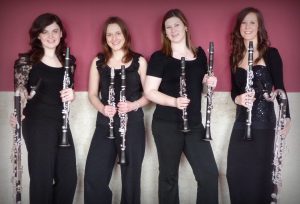 Hot Licorice
Hot Licorice
This is just a little ditty for a clarinet quartet.
mp3
$0.50Add to cart
pdf$10.00Add to cart
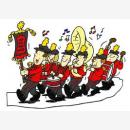 Huntington Beach March
Huntington Beach March
I wrote this March for the Huntington Beach Concert Band. Several concert bands have performed it. The French Horns in the trio was inspired by the great tuba/euphonium work on the version of “Born to Be Wild” from the “Borat” movie soundtrack (a surprisingly good soundtrack, by the way!).
mp3
$0.50Add to cart
pdf$10.00Add to cart
 Barcelona
Barcelona
Written for Acoustic Guitar, Musette Accordion, 2 Gypsy violins, String Bass and Castanets, the piece has a flamenco feel to it. After I wrote it, the title “Barcelona” came to me because it reminded me of what is probably my favorite city in the world, Detroit (just kidding!). If you are young and single (I am neither), you should try to go to Barcelona, Spain. It is an extremely interesting and romantic city! If you can walk up and down “La Rambla” without falling in love with something… a person, the city, the music, the people, something (and probably all of the above)… you should check yourself for a pulse!
mp3
$0.50Add to cart
pdf$10.00Add to cart
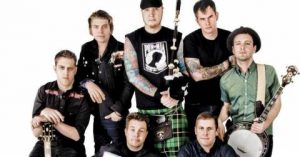 Irish Rock
Irish Rock
This is in the style of some Irish Rock Bands like the Rumjacks and Dropkick Murphys. I was trying to write something for a TV series similar to a reference track that I was given. So, this is very similar to that track. But my submission didn’t get picked. It is written for Electric Guitar, Accordion, Banjo, bass and drums. The banjo, accordion and 6/8 time are mostly what gives it the Irish flavor. I had just finished writing my second Symphony, so this gave me a good way to blow off some pent up musical steam!
mp3
$0.50Add to cart
pdf$10.00Add to cart
 Orient Express
Orient Express
The Orient Express, as you probably know, was a railroad train service that ran from Paris to Istanbul in the late 1800s and early 1900s. There is an early quote in the piece of the French “Marsillaise “and once again near the end for the French touch, as well as some figures here and there that give it the feel of the Orient. After the intro and first 2 phrases (which are like a long fanfare), it abruptly goes from 100 bpm to 150. That 2 to 3 ratio increase in tempo initially gives it a feeling of triple meter over duple and, at the same time, the square eighth snare drum gives an added train effect. It is upbeat and driving and ends with the flutes doing a train whistle. The piece is scored for concert band.
mp3
$0.50Add to cart
pdf$10.00Add to cart
 Rockin’ Hot Boogie
Rockin’ Hot Boogie
For saxes, trumpets, trombones, Electric guitar, Piano, bass, and drums, this is a Big Band Boogie Woogie. I wrote a short version of this for musical that never materialized. I recently expanded it into a full piece. It is a very typical Boogie Woogie (12-bar blues) scored for a standard 17-pc big band.
mp3
$0.50Add to cart
pdf$10.00Add to cart
 Something Kind of Nice
Something Kind of Nice
A romantic piece with piano, choir and strings. I wrote this song in 1963 (I was 19 years old) in an Air Force parachute tower on the island of Guam. Parachuting was part of my job in the Air Force. The tower was a giant cylinder made out of cement. It was probably 15-20′ in diameter and 30-40′ high. We packed our own chutes and we used the tower to hoist them up and shake out the debris and dry them out before repacking them. On Guam, it rains once a day during the dry season… and all of the time during the rainy season. So, the chutes always got wet on the jumps. The tower had amazing acoustics (like a giant shower). Occasionally, I would take my horns over there to practice (great acoustics and nobody around). One night, in the tower, I wrote this song. The inspiration was a girl I was madly in love with. I wrote her a letter (this was decades before email, and even phone calls to the mainland were very expensive and complicated back then) and told her about the song and asked her if she could suggest a title. She wrote back and said that she couldn’t think of a good title, but that I should probably call it something kind of nice. Which, of course, is what I did. I orchestrated it a few years ago and here it is. It had been sitting there in my pile of unplayed compositions for 49 years! The girl? She got married about 2 years later (not to me, by the way).
mp3
$0.50Add to cart
pdf$10.00Add to cart
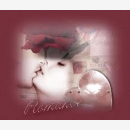 That Moment
That Moment
A romantic piece with piano, choir and strings. Every composer knows that sometimes a piece comes to you quickly and other times it is very slow. This is one that I had to struggle with for a long time. Then, all of a sudden, it started to take shape. Like most compositions, there was no real-life motivation for it, just music. After finishing it, it made me think of love-at-first-sight, or that moment when you first fall in love. I could also hear “That Moment again” as the last three notes of the piece. It seems to want lyrics.
mp3
$0.50Add to cart
pdf$10.00Add to cart
 The Frontiersman
The Frontiersman
Suitable as an opening theme or background music for an Old West, Western, Wild West, Hillbilly or Frontier type film. A few years ago, I wrote a few 20-second opening themes for a Western TV series that didn’t materialize (so far, all of my “breaks” have not materialized!). I recently added a couple of secondary themes to it and made it into a full piece. This could have easily been called “the Kitchen Sink” because it is scored for Symphony Orchestra plus Concert Band plus two choirs plus Acoustic Guitar, Electric Guitar, Harmonica, Jaw Harp, Accordion, and Banjo (that’s over 120 musicians plus a few dozen singers)! This instrumentation pretty much guarantees that it will never be played by a live group… Of course; many will say that the banjo alone does that! The instrumentation also goes against the sage wisdom of Rimsky-Korsakov who said “the will to achieve is not sufficient; there are certain things that should not be achieved”… one of my favorite quotes from one of my favorite books. But, when you have all of these computer instruments, you just want to use them! Rimsky is long gone and these are my toys!
mp3
$0.50Add to cart
pdf$10.00Add to cart
 The Trailer
The Trailer
This is a short (1:58) piece in which I tried to write something like a SciFi movie trailer. I used some synths and some FX with the traditional orchestra. As you probably know, trailers are usually written by people like me (unknown wannabe’s who have the tools to make virtual mock-ups) while the actual composers (the Hans Zimmers, John Williams, Danny Elfmans, et al) are still working on the score. So, the trailer composer is not usually the same person as the film composer and they usually don’t even have any of the themes to the movie to work with. So, the trailer music is generally almost all percussion and effects and is usually completely devoid of any thematic material. I couldn’t quite keep it that simple, though, so I added a few themes. The real trailer music has the benefit of 7.1 surround sound and giant sub-woofers, etc. But, with a little imagination, this piece might pass for a real trailer.
mp3
$0.50Add to cart
pdf$10.00Add to cart
 Ping
Ping
I wrote this piece as a kind of eastern/western blend. It starts out very eastern with only Chinese instruments… Guzheng (sounds like a zither), Erhu (string instrument like violin), Bawu & Xiao (both Chinese flutes), and some Chinese percussion. After 8 bars I started adding western instruments and, around the middle of the piece, I switched to a fully western orchestral version of it. Then, I combined eastern and western instruments, ending with a few bars of eastern only. A Guzheng is the instrument that the girl is playing in the photo. “Ping” is a girl’s name in Chinese. I wrote it for an actual Ping. She speaks very little English, but managed to tell me that she loved it!
mp3
$0.50Add to cart
pdf$10.00Add to cart
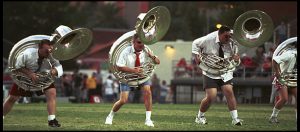
Tubalistics
This is a little piece I wrote for a friend with a tuba group.
mp3
$0.50Add to cart
pdf$10.00Add to cart
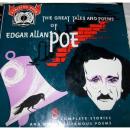 Ulalume Revisted
Ulalume Revisted
At the top, I said that there wasn’t any weird music here. If you’ve gotten this far you’ll, hopefully, forgive me for this oversight. Essentially this is a tone poem or programme music, to express the Edgar Allen Poe poem, “Ulalume,” musically. It is strange, weird, and eerie. It could be used for anything related to horror, scary, creepy, or even Halloween. In 1966, when I was 22, I wrote a short story that I called “Ulalume Revisited.” It was an original short story based on the Edgar Allen Poe poem, “Ulalume.” Even though I can’t claim that I completely understand the original poem, it has a certain intrigue about it. The early part of my story is entirely original, but as it develops, it gets closer and closer to the story of the Poe poem. The endings are identical, but they are two different stories coming to the same conclusion. In the early stages of the story, in addition to the story getting closer to the poem’s story, I borrow an occasional word from the poem, then a phrase, then a sentence, until the story actually ends with the last stanza of the poem. I tried to write it in what I thought was Edgar Allen Poe’s style. I even used hyphens as he did and made up a few words (such as “phantasms”) as Poe did. Poe would usually start a piece of prose by quoting some other author. So, I quoted Poe in the opening of my story. This piece of music was written to express “Ulalume Revisited” musically. By the way, if you’d like a free pdf copy of my short story “Ulalume Revisited,” just click here: Ulalume Revisited. The music starts and ends in C-minor and is essentially tonal, but in the middle section is atonal. The main motif is based on the stanza in the poem: “Ulalume – Ulalume – ‘Tis the vault of thy lost Ulalume.” The motif is first presented in the first 5 bars by the cellos and appears throughout. The piece is basically a soundscape, but all of it is actually musically notated. Even the sound effects are written as notes in Finale (although some notes trigger several sounds). Most of the sound effects are actual instruments and/or choirs (screams, glissing flutes and piccolos, etc.) or synthesizers. I created some “evil” sounds by taking Tuvan throat singing down a couple of octaves. The resulting sound could be a crocodile, a werewolf or a demon. Over 99% of the audio is played from the written notes, but I did add a few negligible synth effects live to the mixdown. I also panned bats, wolves, etc. with automation (you hear the effect moving from left to right in the stereo field). And, I also automated a slow panning of a digging sound, to give the impression that you are moving through a graveyard with ghouls digging up a grave in the distance. The last chord of the piece is a chromatic cluster (all 12 notes of the scale), but since it was preceded by two other chromatic clusters (in a kind of cadence no less!), it needed an even weirder dissonance in order to reach the climax I was aiming for. I didn’t know any way to do that with our 12-tone system, so I copied and detuned the flutes and piccolos (moving them up a half a semitone and added them back to the mix along with their properly tuned counterparts). So, I guess you could call the last chord of the piece a chromatic microtonal cluster (not your typical Haydn chord)!
mp3
$0.50Add to cart
pdf$10.00Add to cart
SYMPHONIES
Please contact me (mhenebry@aol.com) for prices for scores and parts.
 Symphony No. 1 In F Major
Symphony No. 1 In F Major
l. Allegro Molto
I wrote this symphony 35-40 years ago. It took me about five years to write because it was written in my spare time, and I had to write it all by hand. A few years ago, I got to hear it by entering it into Finale, but it has remained un-played by a real orchestra to this day and probably will remain that way forever. The opening movement is very short. It begins with a unison head motive in Andante. The remainder of the movement is in strict Sonata-Allegro form. The Exposition begins with a march-like principal theme. A transitional passage modulates to the dominant key of C Major. The transition is composed of a melody that is superimposed over a sharply contrasting counterpoint. The rhythm of this counterpoint is based upon motives from the principal theme. The short subordinate theme contrasts in key, character, length and style. It is like a Russian dance, complete with tambourine. The closing theme is related to the counterpoint of the transition to the subordinate theme. The Development section is made up of a variation on the principal theme (in the dominant key) and a transition back to the home key of F Major. The new material in the transition is based on the leitmotiv of the second movement. The Recapitulation restates the opening themes (but without a key departure). A Coda briefly restates the principal, subordinate, and closing themes.
mp3
$0.50Add to cart
ll. Andante
Second Movement: Andante, in G Minor. This movement is a fantasia. It was composed in its entirety in one very extemporaneous session. It just “flowed out,” almost too fast to write down. The analysis given here is after the fact. Unlike the other movements, any logic or form is coincidental. The mood of the movement is melancholic, wistful, pensive, maybe even strange. The movement is quite a departure from the other movements of the symphony in temperament and key. The entire movement is based on the minor second motive Eb-D-Eb-D first stated by the solo horn in measure 3. This idée fixe is subjected to many treatments throughout the movement (a typical 18th century elaboration). The motive is altered rhythmically for the first sixteen measures. Then, it gradually develops into a first species counterpoint in inversion and sequence, augmentation and unison. The leitmotiv is apparent, in altered form, as the root of the melodic phrases that follow. The texture becomes very delicate as the score calls for a reduction in instrumentation. Solo clarinet and the first violins share the evolving fragile melody for 24 measures until it is reduced to two violins at the crest of the frailty. This is one of the most sensitive moments in the symphony. The shape of the melody continues to expand, but it is still based on the leitmotiv. A new theme in the related major (Bb) begins. It, too, is based on the leitmotiv. The construction turns retrograde until the end of the movement. After all of the strings have returned to restate the leitmotiv, the ranks again begin to thin until, by the close of the movement, the violins are reduced to 4 desks of 1sts and 4 desks of 2nds. The Leitmotiv is rhythmically augmented, augmented again and still once again. The section ends as the dynamics reduce to triple piano, and then the movement completely fades away.
mp3
$0.50Add to cart
lll. Allegro
The third movement is a “Song Form and two Trios.” Much of it is light and even humorous in style. The Principal Song, or Scherzo, is in A A’ BA’ BA” form. This is followed by a transition into the first Trio. The Trio is in Bb major, the subdominant. It is in ABA form. “A” germinates from the last half of the subordinate theme of the first movement, and “B” is from the leitmotiv of the second movement. Also in “B,” the head motive that opens the first movement is heard as a counterpoint in the trombones. The Trio, then, has a strong cyclic function. There follows a transition back to the home key of F major. The Scherzo is briefly restated in nearly its original form. The movement again changes key, this time to the dominant (C major). There is a transition to the new key and the second Trio. The second Trio is in 3/4 time and is made up of two waltzes in AABABA form. The second waltz is based on the theme of the head motive. The second Trio is followed by a transition back to the key of F major and to cut time. The Scherzo and the first Trio are repeated, then the Scherzo is repeated once more. The movement ends with a Coda. The Coda is comprised of a mixture of fragments from the Scherzo, some new material, and a brief use of the head motive.
mp3
$0.50Add to cart
lV. Andante/Allegro
The Finale brings the symphony firmly back into the key of F Major. The movement is a “Fantasia-of-Recollections” of the kind that was fairly typical in the post-Berlioz nineteenth century (i.e., the head motive alternating with themes from the previous movements, as a cyclic device, along with some new material). The movement begins with the strings in open voicing. New thematic fragments are introduced during the first 49 measures, until a song-like theme is introduced. The song theme and the earlier fragments become mixed. Then an apprehensive-sounding background supports some thematic bits and pieces along with a statement of the head motive. At the same time, the key changes to the dominant (C Major). The key quickly returns home and another short theme is introduced before the cut time. The movement up to this point can be considered an introduction to the actual Finale. Beginning at the cut time the movement changes key to the subdominant (Bb major) and takes on a more traditional Finale tempo: Allegro. Themes are recalled from previous movements (more of the cyclic design) and from the movement’s Andante section. The key changes from the subdominant to the dominant and then back to, and remains in, the home key of F Major. The remainder of the movement is a prolonged ending in which the head motive is sounded by the horns and then for the last time by the strings.
mp3
$0.50Add to cart
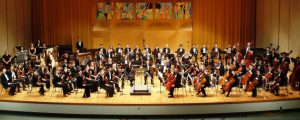 Symphony No. 2
Symphony No. 2
l. Allegro
Being retired and using Finale, this symphony only took about 5 months to write (as opposed to about 5 years for the first one). This is the 1st movement. It is in Sonata Allegro form (which was typical of most Classical and Romantic Era first movements).
mp3
$0.50Add to cart
ll. Andante
This is typical of a 2nd movement in that it is slow, but it is a bit out of symphonic character in style. But I kept thinking as I was writing it: “Who cares? Only a few people are probably ever going to hear it; so why not just do it my way?” It opens with a section written using strictly a whole-tone scale and augmented chords. This gives the music a magical feeling, almost like something you’d hear in a Disney movie (I think Tinkerbell would really like it!). This section is atonal, obviously (being whole-tone), and appears two more times in the movement with some of the same elements plus some different fragments of the melodies from the tonal section (but melodically altered a bit to conform to the whole-tone scale). After the first atonal section (36 bars including a 4-bar intro) it becomes tonal and goes into E-minor. The E-minor section consists of 4 separate themes (repeated once the first time, but not on subsequent appearances). These tonal and atonal sections alternate two more times. Then, the tonal section ends the movement. Each of the four themes is orchestrated a bit differently on each appearance, but the themes are still very recognizable. Another unusual aspect of the movement is that it incorporates a few instruments that are rarely used in a symphony, most notably the celesta and Taiko drums (especially the Taiko drums, and even more especially in a slow movement). Most of the tonal music features the cellos almost wall to wall (sectionally and in solo) and it ends with a short solo cello/solo violin duet followed by a solo cello.
mp3
$0.50Add to cart
lll. Scherzo
A Scherzo is very common for a 3rd movement of a symphony. “Scherzo,” is Italian for “joke.” As a form, it is usually in a triple meter (mine is in 3/4) and usually quick in tempo (mine is Presto mm 196). A Scherzo typically has surprises, with rapid change of music, is lively, whimsical, humorous, and is usually in rounded binary form. Mine conforms to those conventions. The rounded binary form comes from the older Minuet and Trio form. This is a Scherzo and Trio (the Trio starts when you hear the castanets). I used the Lydian mode and a lot of bassoon to add a little more of a comical touch to it. The Scherzo is in G Lydian and the Trio is in D Ionian (the dominant of the related major of the E minor of the 2nd movement). Then, for the return of the Scherzo, it goes back to G Lydian. In the Trio, I used some syncopation and some poly-rhythms (still in 3 quarter time). The movement is basically a series of dances in 3, with varied orchestration and on the light-hearted side. The dances are all in ternary form (nested within the larger rounded binary). Like the 2nd movement, this movement is a bit more lyrical than a typical symphonic movement.
mp3
$0.50Add to cart
lV. Presto
The final movement is in Sonata-Rondo form, which is a common 4th movement form and a more complex version of Rondo form, which in turn is a form where the main theme (the refrain) returns after each episode (in this case, ABACABA Coda). It is in the tonic of the Symphony (“C”). It opens with the unconventional idea of an unaccompanied Timpani solo in a variation on the principal theme (the refrain). In the final bars, the Timpani plays a variation of the introduction under the orchestra. I tried to be very conventional in tonality and form. It took about 5 months to write the whole symphony, which is a long time to be writing something that will only be heard by a few people (and with only virtual instruments no less)!
mp3
$0.50Add to cart
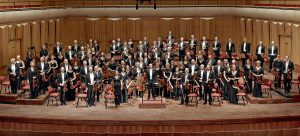 Symphony No. 3 In Gm
Symphony No. 3 In Gm
l. Allegro
This first movement is in Gm and is a bit more modern than my first two symphonies. This one, seems to roam (maybe too much) from about 1860 to 1920 in style. It was a conscious attempt to try to modernize. In the process, this movement has extended tonalities (flat ninths, elevenths, etc.), some pointillism, some impressionistic parallelism, and some tonal departures (I wouldn’t quite call them modulations, they’re more like short errant key centers). One interesting thing is my fairly constant use of a bowed gong (a regular gong is bowed using a cello or bass bow). The movement is in Sonata Allegro form (it’s hard to tear myself away from this first movement convention). This time, unlike my previous symphonies, the development section really does develop. In fact, maybe to the extent that the original themes will be hard to recognize (but they are technically there).
mp3
$0.50Add to cart
ll. Andagietto
This movement is an Adagietto in Em. It is in a song form and the themes are long and through-composed. It is scored for orchestra and choir. The only thing I had in mind was to write something beautiful.
mp3
$0.50Add to cart
lll. Allegro
A very unusual third movement. It is an Allegro that sounds more like a Lento because the triple meter is felt in “one,” and it is very dark in spirit. Usually, the third movement of a symphony is an upbeat, lighthearted Scherzo in triple meter. This is in 3, but it is not at all lighthearted or upbeat. It is slow and regal. This movement is intense, serious, stately, powerful and passionate. It may not be a typical third movement, but I like it, it’s “my” symphony, and almost nobody (except you) will ever hear it, so why not? The 8-bar intro has violas followed by cellos with two motifs from the main theme over a very weird background of choir and bowed gong (tying this movement to the first movement). I have the vocalists in the choir matching some of the prominent harmonics in the gong. From that point to the ending, the movement is like a Chaconne or Passacaglia (also rarely, if ever, used for a symphonic movement). The phrases are also extremely long at 32 bars each. The “ostinato” is played 12 times. The form is six 32-bar phrases plus an 8-bar intro and a 20-bar coda. Except for the ostinato phrase (which almost never varies), every other phrase is a completely new theme. Each theme, or episode, is played once and then repeated once (with a different orchestration), but is never heard from again. The ostinato provides the cohesion to glue the movement together. The first presentation of the ostinato appears in its basic form right after the 8-bar intro and is repeated 11 more times almost without variation. Each succeeding theme is superimposed over it. The themes are always (100% of the time) voiced in solo, unison or octaves. I did this in order to impart a kind of power to the themes. There is not one known “chord” in the entire movement. The “chords” that do appear, are only from the confluence of lines (counterpoint). I did not calculate any of them vertically.
mp3
$0.50Add to cart
lV. Allegro
The finale is very brass-heavy (3 trumpets, 4 French horns, 4 Wagner tubas, 2 trombones, 2 bass trombones, 2 Cimbassi, and tuba). The opening theme is very Milkos Rozsa/John Williams-ish. So much so that, after finishing the movement, I felt obligated go to my CDs and listen. I didn’t find any thematic rip-offs, but the mood and style is definitely in the same vein. As you know, some composers (and/or later critics and scholars) have named some symphonies (Pathetique, Pastoral, etc.) and Schubert had his “Unfinished” (I could call this my “Unplayed”). But, after listening again to the entire symphony, it seems to me that it begs to be called the “Gladiator.” In fact, there is a bowed gong in this last movement that is not only a unifying factor between the movements, but even sounds like a crowd roaring at a Gladiatorial spectacle. The opening theme is brought back several times throughout the movement, along with a few other new themes and treatments of various themes from the previous 3 movements. Along with the extra brass, there is the fairly unusual addition of piano (this has been more and more common in symphonies of the post-19th century). The Coda, as with many of my codas, has a very Khachaturian feel to it (with a little Tchaikovsky thrown in for good measure).
mp3
$0.50Add to cart
Symphony No. 4 In Em, Op. 71
l. Allegretto
This is the 1st movement. It is in the Phrygian mode (which gives it a kind of Middle-Eastern flair). I seem to be drawn to that mode. It, like all my other 1st movements of my other 3 symphonies (and most of the masters’ symphonies) is in Sonata Allegro form. I took a few liberties, but basically it conforms to Sonata Allegro. I wanted to stay Phrygian, so instead of the normal modulations of the 2nd theme to dominant or the relative major, I stayed Phrygian, but went to the closely related F#m. As a result, the piece is in Phrygian throughout. The development is in Bm and goes through a few short modulations (or internal tonicizations). The development of the romantic theme (which I don’t develop very much) starts with a string quartet. Interestingly (to me anyway), there are a few empty 1/4 bars (it is in 4/4) that I used as measured Grand Pauses. I don’t recall ever seeing a 1/4 bar, which is partly why I did it… Of course, I could have gone to a 5/4 for a bar. The movement ends with a short Coda and a Picardy ending in the relative major (G). Audio-wise, I doubt if anyone will notice, but I used the European seating system for the placement of the instruments in the stereo field. It seems to make slightly better acoustic sense.
mp3
$0.50Add to cart
ll. Andante
The movement is in A- minor and has basically 4 themes… presented, of course, in several different ways. I used a “swirl (an upward sweep using different rhythms simultaneously with different instruments)” for the first time in my life in this piece. I like the effect and I’m sure I’ll use it again. In case I’ve piqued your interest, it occurs near the middle of the piece when it goes dramatically from the mellow romantic mood to the powerful and exciting. The movement, like most classical 2nd movements, is slow. But I departed, somewhat, from tradition in that it is songlike (melodic, singable, etc.) and with the substantial use of piano. I am not breaking any new ground here, but it’s still a little rare.
mp3
$0.50Add to cart
llI. Scherzo
The 3rd movement is on the light side. In other words, it is very “pop” like. So, if you are a true longhair, you might think it is a little too shallow. But third movements are traditionally jovial, especially if it is a Scherzo. So, if off the mark, it isn’t too far off. It is brisk, fun and a little tongue-in-cheek. It sounds, in spots, a little challenging, but I think it could be played by pros or strong amateurs (or slowed down a bit).
mp3
$0.50Add to cart
lV. Allegro
The finale is in a modified Sonata Allegro form. The first half of it is made up of new themes. In the development section, I recall fragments of various themes from the first 3 movements. And, in the Coda, I revived the romantic theme from the 2nd movement. This time, the theme is bombastic and powerful. I augmented the brass by two bass trombones and two cimbassos (cimbassi?). The ending is pretty conclusive, I doubt if anybody will be asking “is it over!”
mp3
$0.50Add to cart
Symphony No. 5 In C Major, Op. 75
l. Allegro Moderato
“I have said many times how stupid it is to write a Symphony these days. But I got to thinking that it is no more stupid than writing any other kind of music that no one hears, right? So, I wrote another one.
As with my other symphonies, the 1st movement is in Sonata-Allegro form. I did modify the form a bit though. Instead of the 2nd theme being in another key in the exposition, it stays in the tonic. The entire development section is in the dominant. Other than that, and not repeating the exposition (which is routinely done anyway by conductors, if not the composer), the form is pretty standard.
Style-wise, it is very Americana, almost Western in spots, not modern (Impressionistic, Expressionistic, etc.) at all and kind of film score-ish in spots. But that’s just what comes out of me.
mp3
$0.50Add to cart
ll. Lento
The movement is a Lento (very slow). Slow tempos are typical for most Symphony 2nd movements. It is in Dm. It’s a little on the dark side. But Symphonies are all about contrast between the movements. Here it is. Please let me know what you think of it.
mp3
$0.50Add to cart
llI. Scherzo
This is a Scherzo, which is a more playful kind of movement.
mp3
$0.50Add to cart
lV. Allegro
This is the Finale. It, like most everything I write, is tonal and lyrical. It features a lot of ostinato and, after the intro, is pretty much relentless.
This might be the last Symphony I write because, even though I got over the “stupid” hurdle, I got to thinking that symphonies require a lot of work (I estimate about 300 hours each). So, as long as nobody is interested in my music anyway, why not write easier pieces?
mp3
$0.50Add to cart
Symphony No. 5 In C Major, Op. 75
l. Allegro Moderato
“I have said many times how stupid it is to write a Symphony these days. But I got to thinking that it is no more stupid than writing any other kind of music that no one hears, right? So, I wrote another one.
As with my other symphonies, the 1st movement is in Sonata-Allegro form. I did modify the form a bit though. Instead of the 2nd theme being in another key in the exposition, it stays in the tonic. The entire development section is in the dominant. Other than that, and not repeating the exposition (which is routinely done anyway by conductors, if not the composer), the form is pretty standard.
Style-wise, it is very Americana, almost Western in spots, not modern (Impressionistic, Expressionistic, etc.) at all and kind of film score-ish in spots. But that’s just what comes out of me.
mp3
$0.50Add to cart
Symphony No. 6 In C Major, Op. 84
l. Allegro Moderato
This piece is the first movement of my 6th Symphony (as yet, unfinished). I have struggled with the idea of writing symphonies. It is generally considered a waste of time, outdated, even pretentious. I have gone back and forth. I recently wrote several light things (Funk, Mambo, Tango, Calypso, etc.), but it turns out that I really like writing the more serious kinds of music. And, since nobody actually listens to it anyway, I might as well just write what I like, right? I have, recently, even tried to stop writing music (since it is like the tree falling in the forest with nobody there to hear it), but I just don’t seem to be able to stop. I can’t stop studying either (I just bought two more orchestration books). The other 300 music theory books didn’t make me Beethoven. So, I don’t know what makes me think these two will. I should probably try cocaine. The movement is in a loose Sonata form and, like most of my symphonic work, is a little more lyrical and cinematic than most traditional classical symphonies. Although, there are a few more wilder chords in this one than usual from me (some flat 9ths, a +11, contrapuntal dissonances, etc.). Just for the hell of it, I kept track of my time writing it. It took 96 hours. So, a full symphony should take me about 400 hours to write. Now, what better could I do with 400 hours? Okay, true! But, considering my age and COVID? There will be three more movements in the next month or two (all vaguely floating around in my head already). Then, I will possibly write one or two more symphonies. I plan to stop after 8, though, because most composers have died after writing 9.
mp3
$0.50Add to cart
ll. Andante
This movement is basically in two parts. The first part is contemplative and the last half is lyrical and romantic. It is in the relative minor (Bm).
mp3
$0.50Add to cart
lll. Prestissimo
This is the 3rd movement. Traditionally, the 3rd movement of a symphony is a Scherzo. Even though this is in ¾ time, it is not really a Scherzo. It is a little too militant and dark to be a Scherzo (which is usually a lot more light-hearted). About half the time, I create my own forms. This is one of those times. Written over the past month or so, it probably reflects the isolation stemming from the pandemic coupled with a major snowstorm here in Texas which has had most of us pretty much snowed in and with temperatures going down to 2 below zero the other night (along with power outages)! Not the best of times! Come on Spring!
mp3
$0.50Add to cart
lV. Presto
This is the 4th and final movement. It is in a lose Sonata Allegro form (Exposition, Development, Recap) with primarily two main moods, a mellow one and a bombastic one. There are 6 key changes to 4 different keys (D, E, A, B, D, E, D). It is a Presto (mm = 184).
mp3
$0.50Add to cart
Please check out my other web site: bigbandtranscriptions.com where I sell transcriptions and arrangements.

